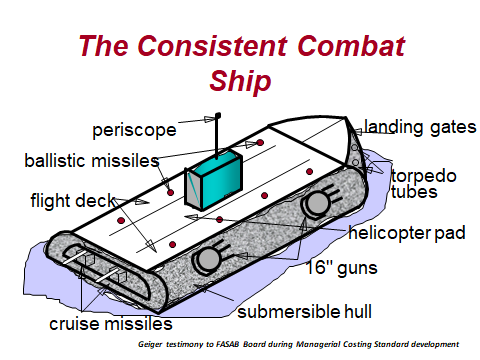Three Keys to Impactful Managerial Costing
- Dr. Dale R. Geiger CMA CGFM

- Aug 27, 2021
- 3 min read
Remember that managerial costing’s purpose is to support operational improvement or decision making. There are three keys that designers must simultaneously achieve if the effort is to have an impact. The output of the measurement process must be credible, useful, and affordable.
A Major Effort at Fort Knox
The U.S. Army sponsored development of activity based costing in the 1990’s and the Maintenance Department in the Garrison organization at Fort Knox, Kentucky was one of the subjects. The Army contracted a consulting firm, provided all data necessary, and made personnel available for interviews. Costs pooled and allocated to activities based on the results of those interviews. After months of work (and hundreds of thousands of dollars in development cost) the consultants delivered a system that showed the cost of 1500 maintenance activities to the penny.
It had no impact. Maintenance department managers found no use for the reports. Why?
It was NOT USEFUL.
Well, first of all it was too much detail. Most of the costed activities were very small and somewhat irrelevant. Besides, the budget was not developed on an activity level so there was no basis for comparison. Furthermore the report showed annual data provided months after year end. Annual data on relatively small activities was in no way actionable by managers.
It was NOT CREDIBLE.
Moreover, the numbers were not easily understood. The activity based process used extensive allocation processes that were not transparent or comprehensible to the managers. While perhaps 100% accurate, the reports were not trusted by managers. The fact that the reports purported results to the penny did not impress anybody and was really a distraction.
It was NOT AFFORDABLE.
The cost of the contract to develop the system was considerable. The effort required to maintain the system was also significant. Management perceived the benefits of the effort as substantially lower than the cost of it. Budgets were being tightened and managers perceived the resources could have been spent better in other areas.
Some Tips for Improving Usefulness
The effort was simply not management driven. The best case is for managers to “pull” the intelligence they need to perform their responsibilities. They are unlikely to use data “pushed” unto them by others.
The efforts was clearly too complex. Now some of the blame here goes to the Army. Managers were familiar with the budget process and feared that not having all activities defined would result in lower budgets. It would be much better to start with a simple set of activities and evolve to greater complexity when and if management needed it.
Some Tips for Improving Credibility
I’ve seen numerous efforts where the costing process was viewed as “the black box.” That is to say that it was not understood and therefore was less likely to be trusted. Reducing system complexity is key. A smaller number of activities would help. Managers should also be involved in making the assumptions that drive allocations. It would be best to have them approve and therefore understand all aspects of the allocation process.
Presenting numbers to managers to the penny is also a distraction. Only showing two digits conveys data with 99% accuracy. Rounding to nearest $K, $M, or $B makes numbers much easier to comprehend.
Some Tips for Improving Affordability
Unfortunately, it is always possible to go to greater levels of detail in cost accounting. And I do mean ALWAYS. The measurement process must be bounded in some way to reduce its cost as there is a significant diminishing return to added complexity. Remember that managerial costing is not driven by compliance to external reporting requirements. The cost of the effort must be less than its value.
Conclusions
For managerial costing systems to have impact they must be useful, credible, and affordable. All three requirements must be met simultaneously.





Comments